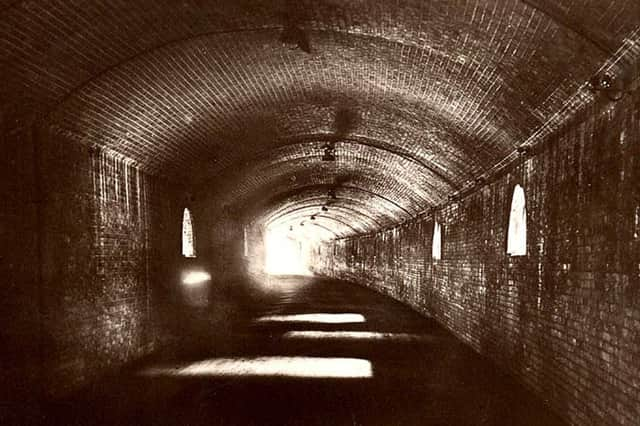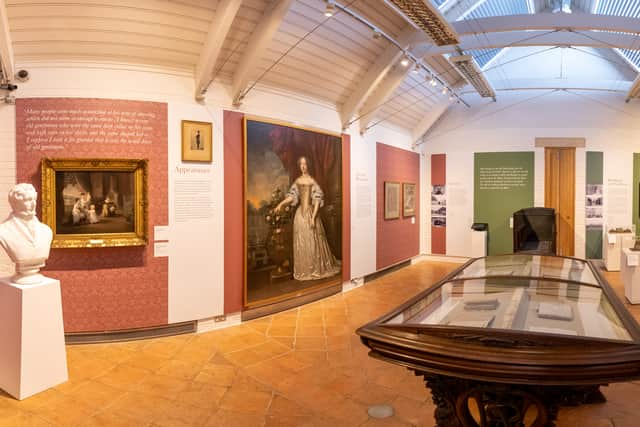The eccentric Nottinghamshire duke who transformed Welbeck Abbey into an underground maze


He was nicknamed the “burrowing Duke”, and he surely has to rank as one of Nottinghamshire’s most eccentric Victorian figures.
By the time he died in 1879 the 5th Duke of Portland had transformed the earth beneath the magnificent estate of Welbeck, one of ‘the Dukeries’ of North Notts, into a bizarre and mysterious subterranean labyrinth of chambers, tunnels, and grand underground rooms.
Advertisement
Hide AdAdvertisement
Hide AdQuite why he did this isn’t clear. In fact, the life of William John Cavendish-Scott-Bentinck, or ‘Lord John’ as he was known in his day, is mired in mystery and speculation.
More is known of his quirks than anything else. And many of the stories are apocryphal.
Read more: Your Nottingham
For instance, the Duke did not live a double life and sire multiple illegitimate children as a London upholsterer called Thomas Charles Druce, as per a salacious courtroom scandal that befell the family just after his death.
Advertisement
Hide AdAdvertisement
Hide AdAnd it’s probably not true that the Duke demanded to have a whole roast chicken ready to tuck into at any time, night or day. Although he was fond of chicken.
Really there’s no need to make up stories about the 5th Duke of Portland’s strange habits, because what we do know for certain is eccentric enough. The documented fact that he wore three pairs of socks at a time is one of the least of them.
Lord John Bentinck, the 5th Duke of Portland, resided in the family seat of Welbeck Abbey in north Nottinghamshire. Born in 1800, he inherited the grand estate that had been in the family since 1607, and the title of Duke of Portland, with the death of his father in 1854.
Coming from a long line of influential and high-powered figures - Lord John’s grandfather served two terms as Prime Minister - the 5th Duke had achievement in his genes.
Advertisement
Hide AdAdvertisement
Hide AdBut where his ancestors had taken their places in high office and high society, the 5th Duke set his sights much lower.
Driven by some unknown purpose - or perhaps one of the great innovations of his day, the first underground metro lines in London - the Duke set himself an extraordinary project.
He would burrow beneath the earth of Welbeck, and build his own subterranean world. Using the labour of hundreds of workers from the estate and beyond, Lord John set about creating some truly bizarre features to his estate.
By the time he was finished he had burrowed out space for a huge subterranean ballroom which, with a rumoured capacity of 400 people, would have been one of the most capacious in Britain.
Advertisement
Hide AdAdvertisement
Hide AdHe built tunnels wide enough for a coach and horses to pass through. The underground maze opened up to a library, an observatory, even, reportedly, an exercise yard for the many donkeys he provided as transport for his workers.
But it was no grubby pit beneath the ground: some of the tunnels were topped with glass ceilings to allow light in to underground fruit orchards below.
Sadly while the tunnels and underground chambers do still exist, they can’t be accessed by the public for safety reasons.
The life of a Duke


But there is plenty to learn about the life of the Duke, and the long history of the Welbeck Estate, in a permanent exhibition at the Harley Gallery on site.
Advertisement
Hide AdAdvertisement
Hide AdThe Tunnel Vision exhibition is just one of the many splendours at The Harley Gallery. We have the 5th Duke to thank again for another of these - the great Portland Collection.
Described as "One of the finest aristocratic collections in England", the ensemble of treasures of the era includes a pearl earring worn by Charles I at his execution and paintings by Van Dyck and Michaelangelo .
There were those in the Duke’s lifetime, and many since, who have speculated that his fixation with digging underground stemmed from an innate aversion to people and a quest for solitude.
This is somewhat reinforced by the existence of letterboxes on the door to his bedroom - which can still be found inside Welbeck Abbey - through which he communicated with staff members, by letter.
Advertisement
Hide AdAdvertisement
Hide AdAn odd fellow indeed. But the people who make history often are. And we have the “burrowing Duke” to thank for furnishing one of the county’s finest estates with splendours, jewels and antiquities above, and a mysterious world of unseen wonders below.
